For diver Bill Eberlein, the quest to find teeth of the planet's largest predator is a passion
On an early, mid-July morning at a private dock near Midway, Georgia, diver and shark tooth hunter, Bill Eberlein, readies his scuba gear for a couple hours of feeling his way along the Atlantic seafloor. Above, the sky shifts a patchwork of blue sky and dark, low clouds. In the distance a heavy burst of rain over the marsh hints at the day’s potential for volatile weather.
But that doesn’t deter him.
Since 2002, he’s been professionally searching for megalodon shark teeth in the cuts and backwaters of the inter-coastal waterway.
What is that?: Spotting the difference between sharks or dolphins by their fins
'Don't want to surf in litter': Pro surfer, photographer to visit Tybee, boost clean-up efforts
'It's part of our life': Surf instructor back on Tybee beach two days after shark bite
Eberlein, who’s more than six feet tall, sturdily built and topped with an effervescent tussle of dark curly hair, confers with business partner, boat captain and wife, Dodie Gay-Eberlein. Together, as they tidy up the vessel’s interior and consider the latest forecast, they go back and forth about where might yield the morning’s best hunting prospects.
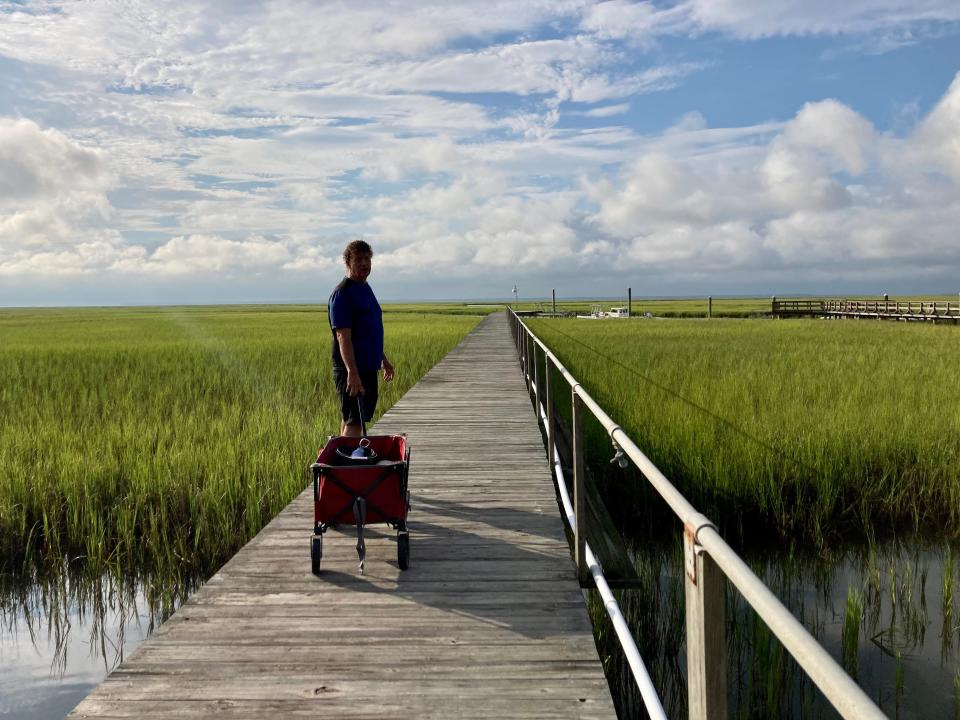
“The tide is headed out, so there’s going to be strong current, and that could turn teeth and things up,” pondered Eberlein. “Let’s keep that in mind as we head out. The clouds and sky will tell us more once we’re out there.”
Gay-Eberlein powers up their 25-foot Parker sport boat and maneuvers through marsh turns and straightaways that gradually give way to open water. Half an hour later, she cuts the engine. Low clouds have broken, and the sky is higher and much bluer.
At one of their secret hunting spots, they anchor at 70 feet and begin suiting up Eberlein for the first deep dive of the day. He’ll be on the bottom for about an hour, resurface and then go back down for another hour.
Go deeper: UGA engineers launch new project to insure salt marshes for their environmental benefits
Preparing for the excursion is a team effort. Once Eberlein has donned a full wetsuit, he sits on the side of the boat, and Gay-Eberlein attaches a weighted belt to his waist and secures a red mesh bag to his chest for collecting shark teeth.
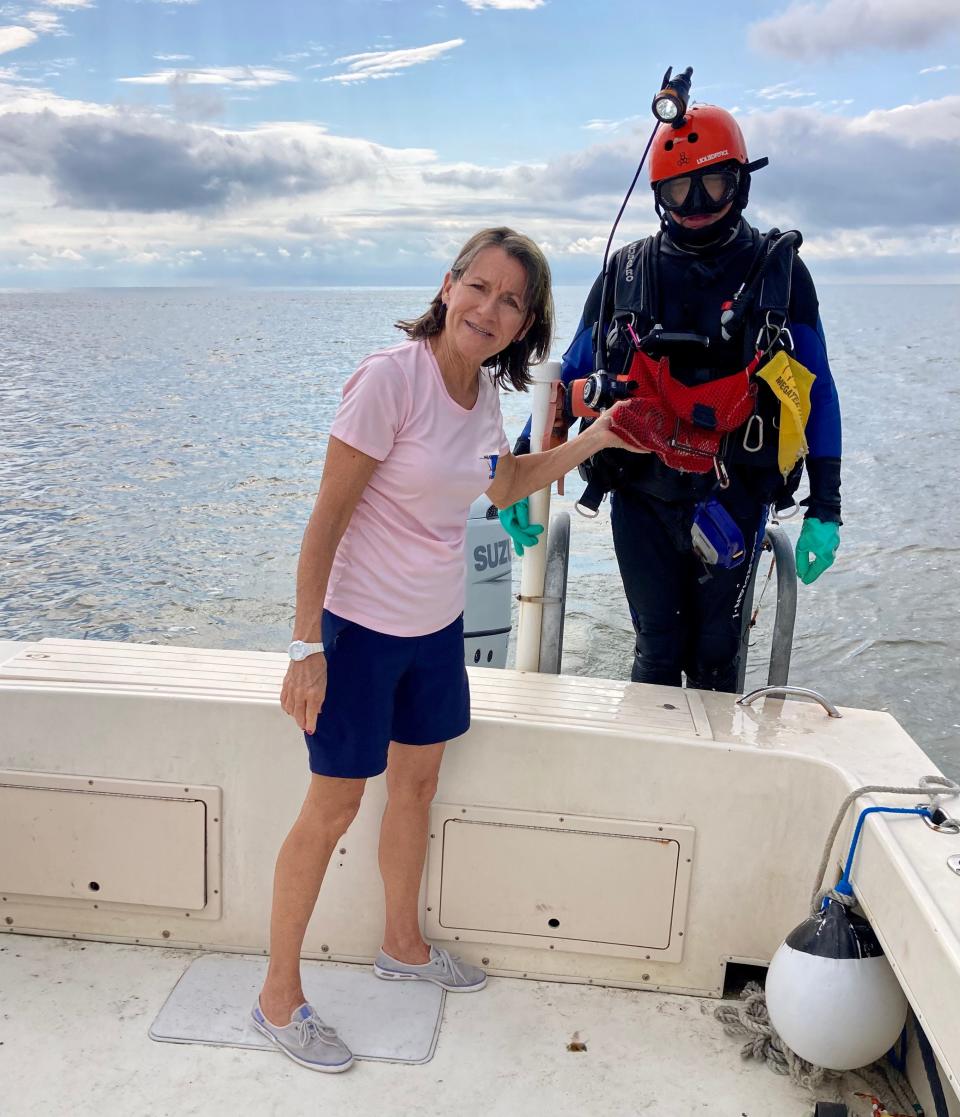
To ensure his body is further protected from the rough seafloor and season’s abundant jellyfish, they work to glove his hands and attach padding to his knees. He also wears a bright orange kayak helmet outfitted with high intensity headlamp.
Then, the pair triple-checks air tank, facemask, and regulator to make sure are all in place and working properly.
Adam Van Brimmer: Savannah boaters need to slow their roll and exercise caution on the water
With fins on his feet, Eberlein tips backward from the gunwale, and in a splash, eases below, following the anchor line to the seafloor. Securely tethered to the boat so as not to be dragged in the current, he’ll sift on hands and knees feeling for the familiar shapes and textures of fossil megalodon teeth, which are typically three to five inches in length and in these waters date as far back as 2 to 5 million years.
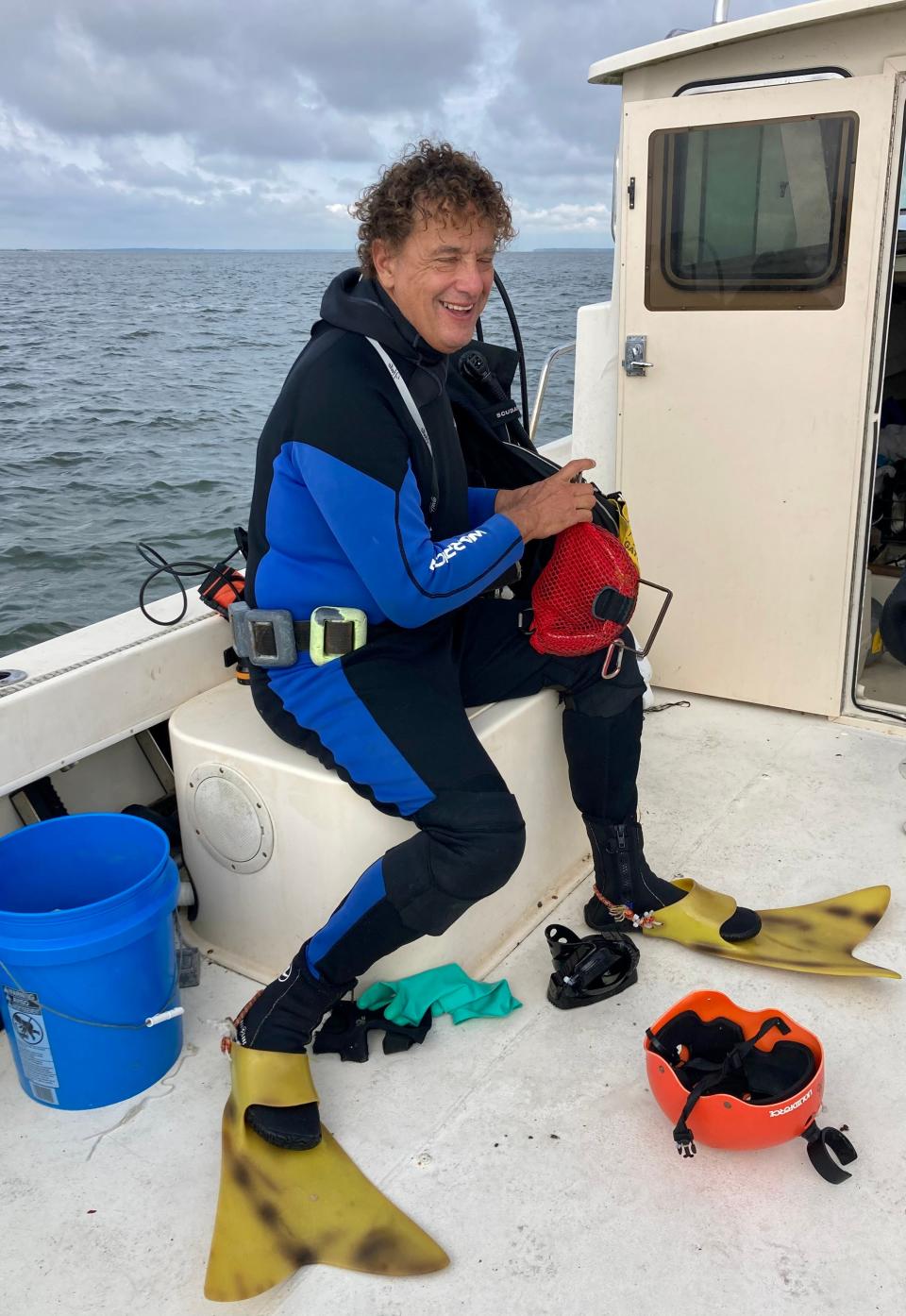
Finding a passion for diving — from Pennsylvania to Coastal Georgia
Originally from Pennsylvania, in his early 20s, Eberlein started diving shipwrecks in Lake Eerie. He and his companions would occasionally find shards of china and other fragments of history. He liked it, stuck with it, and over several years became certified as a diving instructor while also in college and graduate school studying accounting and information technology.
Fast forward to 1999 when Eberlein’s diligence paid off, netting him two master’s degrees and an IT position at Gulfstream Aerospace. Primed for new adventures in the coastal waters of the Lowcountry, Eberlein soon met a colleague at Gulfstream who introduced him to hunting shark teeth.
Georgia DNR official: Let’s make a deal on boating safety this summer: our best for your best
They spent a day on a charter boat off Hilton Head Island. Eberlein was hooked. In a few short years, he would be solely, lucratively supporting himself through megalodon finds.
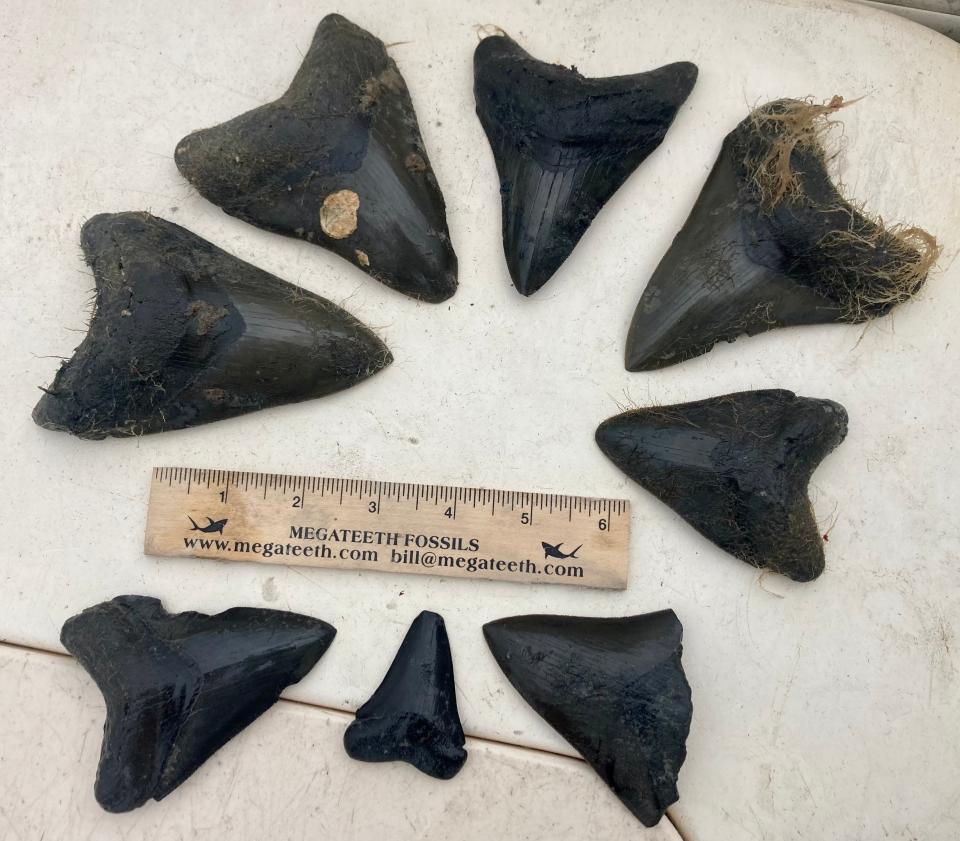
“It was a lot like diving in Lake Eerie,” recalled Eberlein of his first time in the waterways near Savannah. “There’s very little visibility down there, and you have to rely on your hands to feel and find things. Sometimes a horseshoe crab will bump you — that can be a surprise. I’ve had encounters with sharks and stingrays down there, which always gets your attention in the murky water.”
Though jellyfish are a frequent nuisance, sharks, crabs and stingrays are hardly a concern compared to strong underwater currents sometimes created when tides shift.
Opinion: Keep these important things in mind when boating in the Savannah area this summer
Eight years ago, Eberlein was dragged nearly six miles out to sea and needed a Coast Guard rescue. In the mind of Gay-Eberlein, it’s a day seared in both terror and faith
She was home when one of their boat captains called, tearfully telling her “I’ve lost him, I’ve lost him. Bill is gone.” But Gay-Eberlein wasn’t accepting that as the final hunt. The pair had been married less than a year, and she was confident in his steadfast manner in difficult situations. She sprang into action to find him.
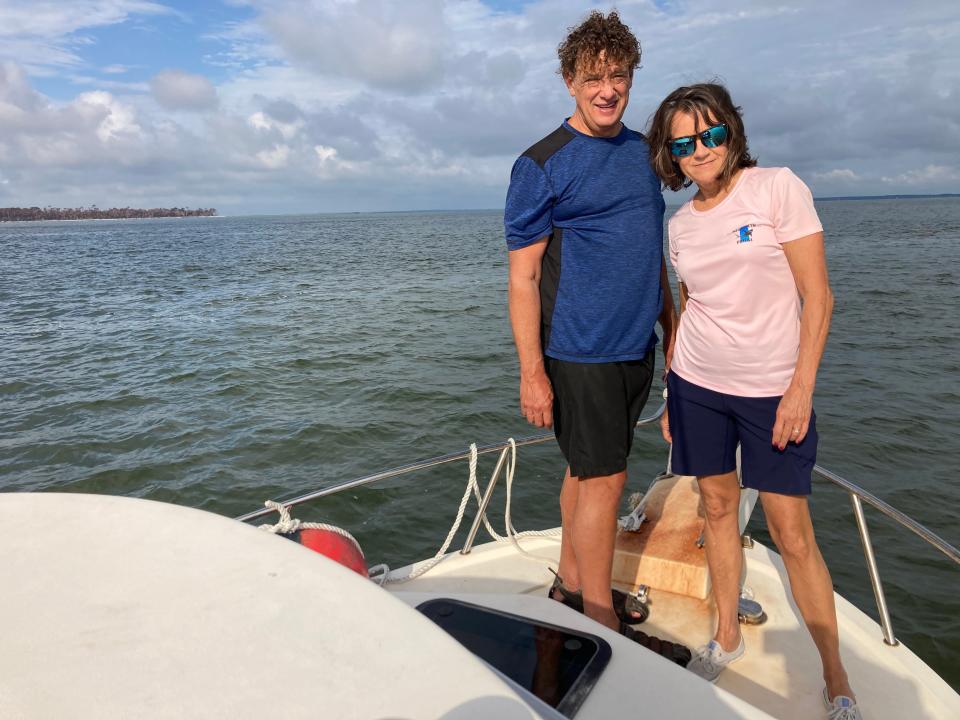
“I immediately located another boat and captain, grabbed my diving gear, and went out to get him,” she recalled with a sparkle in her eye. “I knew I would find him alive because I was not going to let him bail on our one year anniversary.”
When they were reunited on the Coast Guard boat, Eberlein was characteristically calm. He had realized something was off while submerged and assumed something happened to the boat captain. Without panicking, off shore in the Atlantic Ocean, he resurfaced, launched a bright orange distress buoy, and waited to be found.
Dig deeper: With boating accidents rising, here are three agencies tasked with watching Chatham waterways
For Eberlein, the moments beneath the water finding fossil teeth are what keep him inspired. Each one is patterned and preserved in its own special way — the thrill is finding this uniqueness. And for his legions of loyal collectors, many are ecstatic to have something that harkens back to an era when very different species populated the planet.
The quest to learn more about the biggest predator ever to live
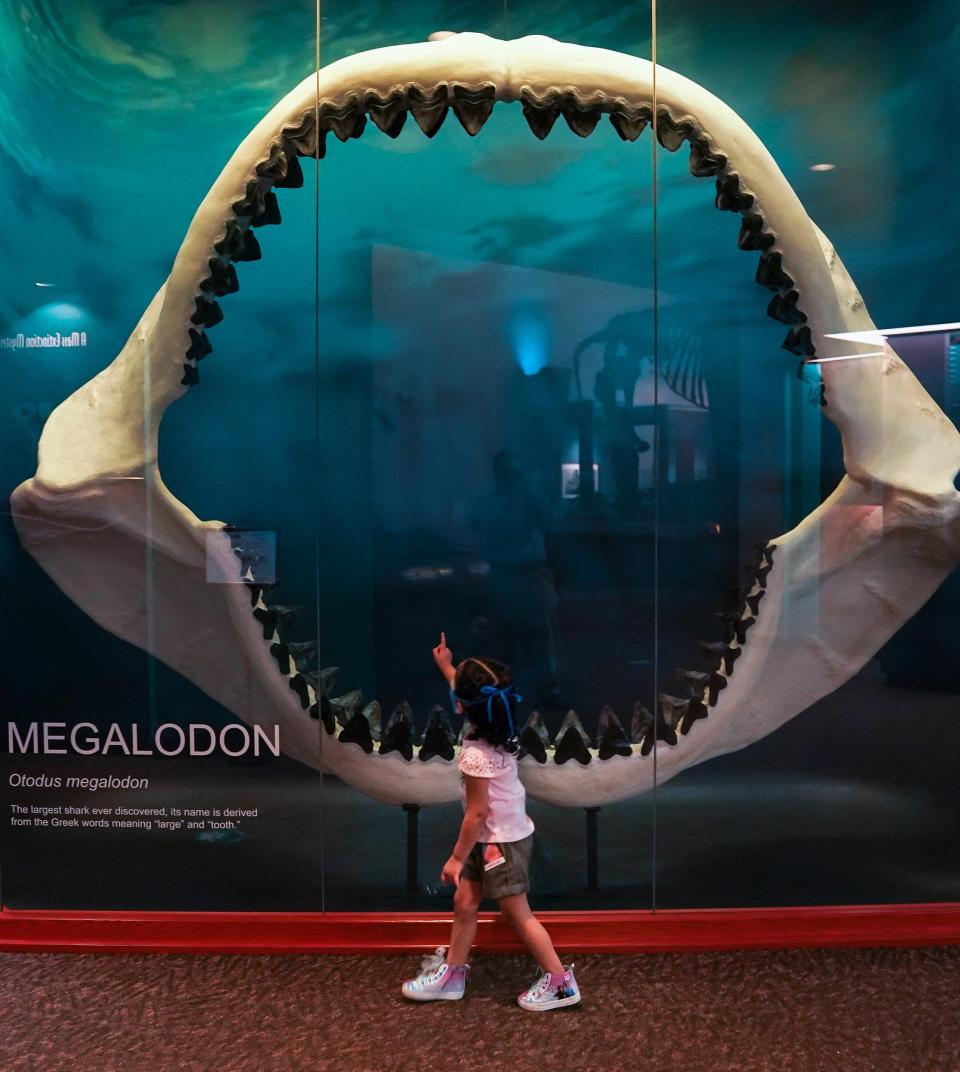
Megalodon, whose name literally means “large tooth,” is the biggest predator ever to live, and the species existed in a timescale staggering to human comprehension. 20 million years ago, the shark began hunting the planet’s oceans, and for 13 million years it thrived until the planet abruptly cooled 2.6 million years ago, when the giant shark went extinct.
An adult megalodon could grow as large as sixty feet, slightly longer than a semi-truck and trailer, and weigh as much as 100 tons. In comparison, the largest recorded great white shark was just under 20-feet long and weighed three-and-a-half tons.
Fossil megalodon teeth have been found worldwide, but the species preferred warm waters as would have been common off the coasts of present day Georgia, Florida, and South Carolina. Tidal rivers in these places have clay and fine silts, which have helped preserve the prehistoric teeth that collectors prize so much today.
Megalodon was also constantly growing and shedding them — an adult would have had three rows lining both its top and bottom jaw for a complete set of 276 teeth.
Also: SS Pulaski, 'Savannah’s Titanic,' explored in new exhibit from Ships of the Sea Maritime Museum
The pair loves the fact that their hunting efforts often help connect people to this deep, natural and geological history. Children, especially, resonate with the species. A father and son once perused the booth at a trade show, and the young boy was particularly smitten with a find that his father ended up purchasing for him.
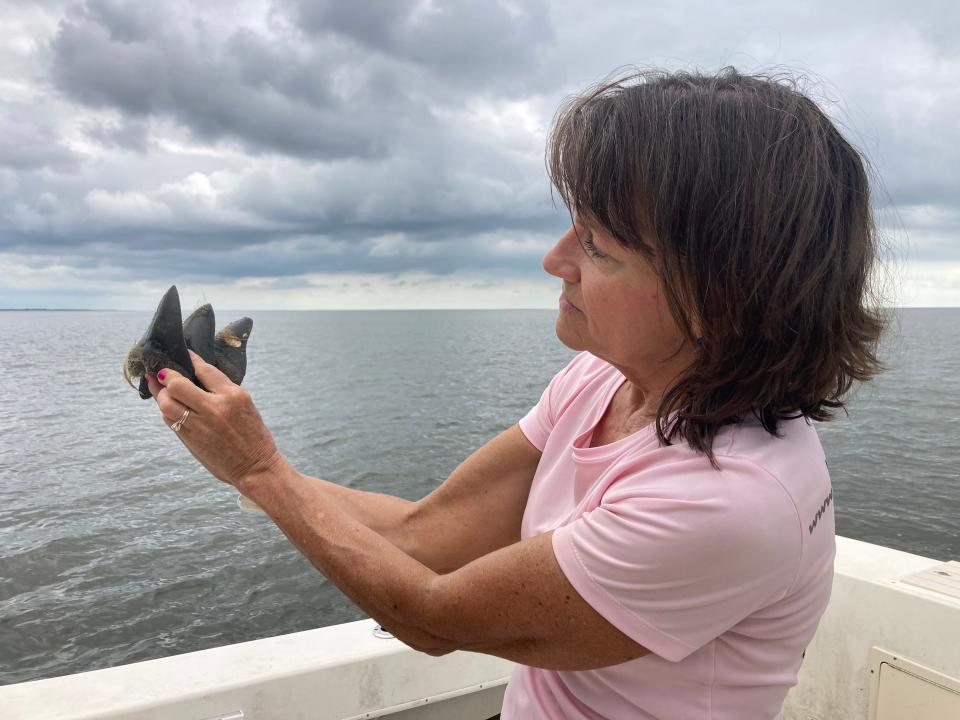
“I remember how special that tooth was to the child and told him, ‘this shark tooth has been around for two million years, and that’s how long your daddy’s going to love you,’ ” recalled Gay-Eberlein.
“For many people, being able to hold a one-of-a-kind item that was once part of a large animal that swam here millions of years ago, is beyond fascinating. The tooth survived with its own story, and now the collector, or father and son, is part of continuing its unique history.”
To learn more about what Bill and Dodie are up to, or to become part of the story yourself, check out their website and business, MegaTeeth at megateeth.com.
This article originally appeared on Savannah Morning News: Georgia shark tooth hunter talks finding megalodon teeth near Savannah

